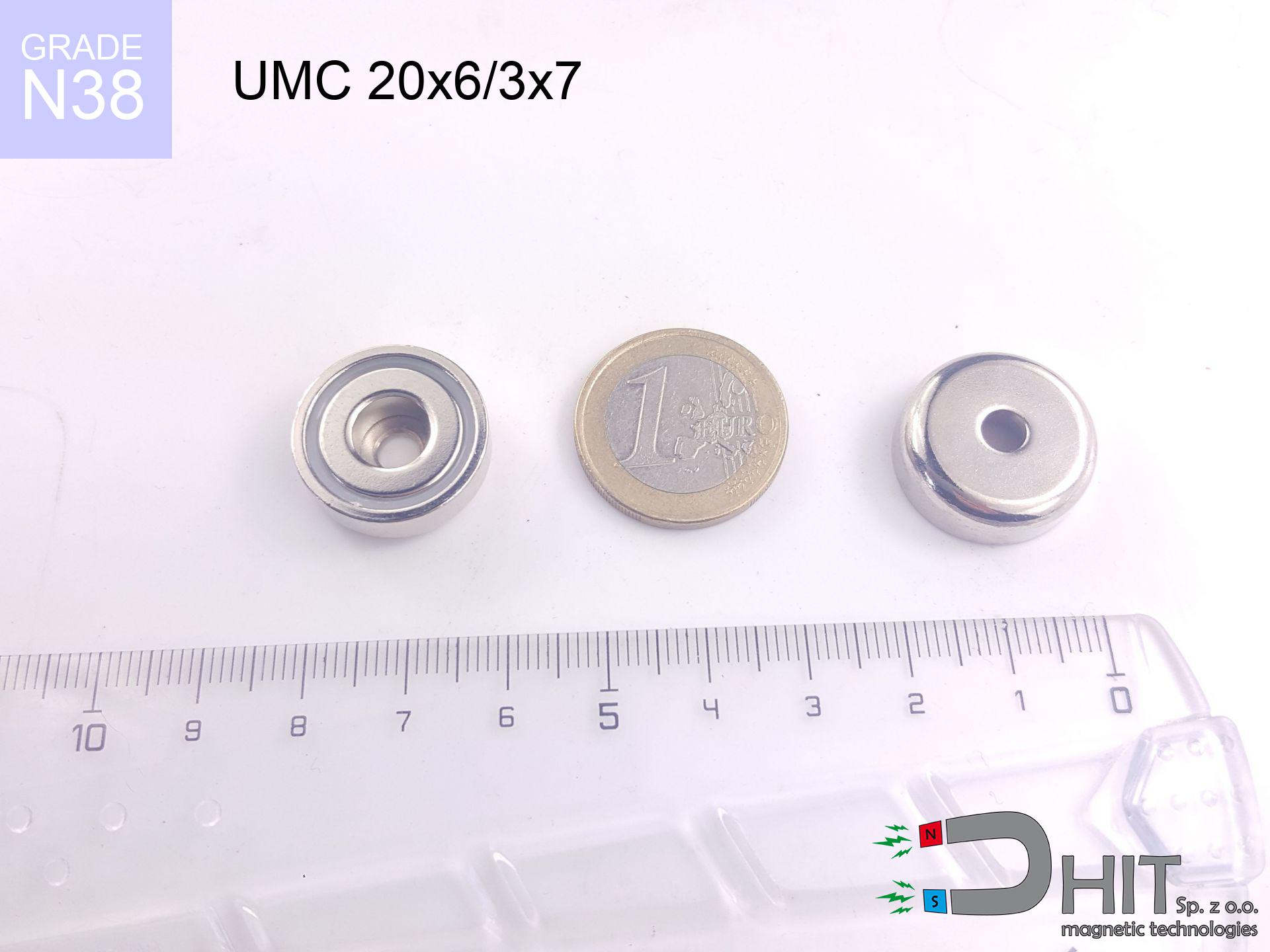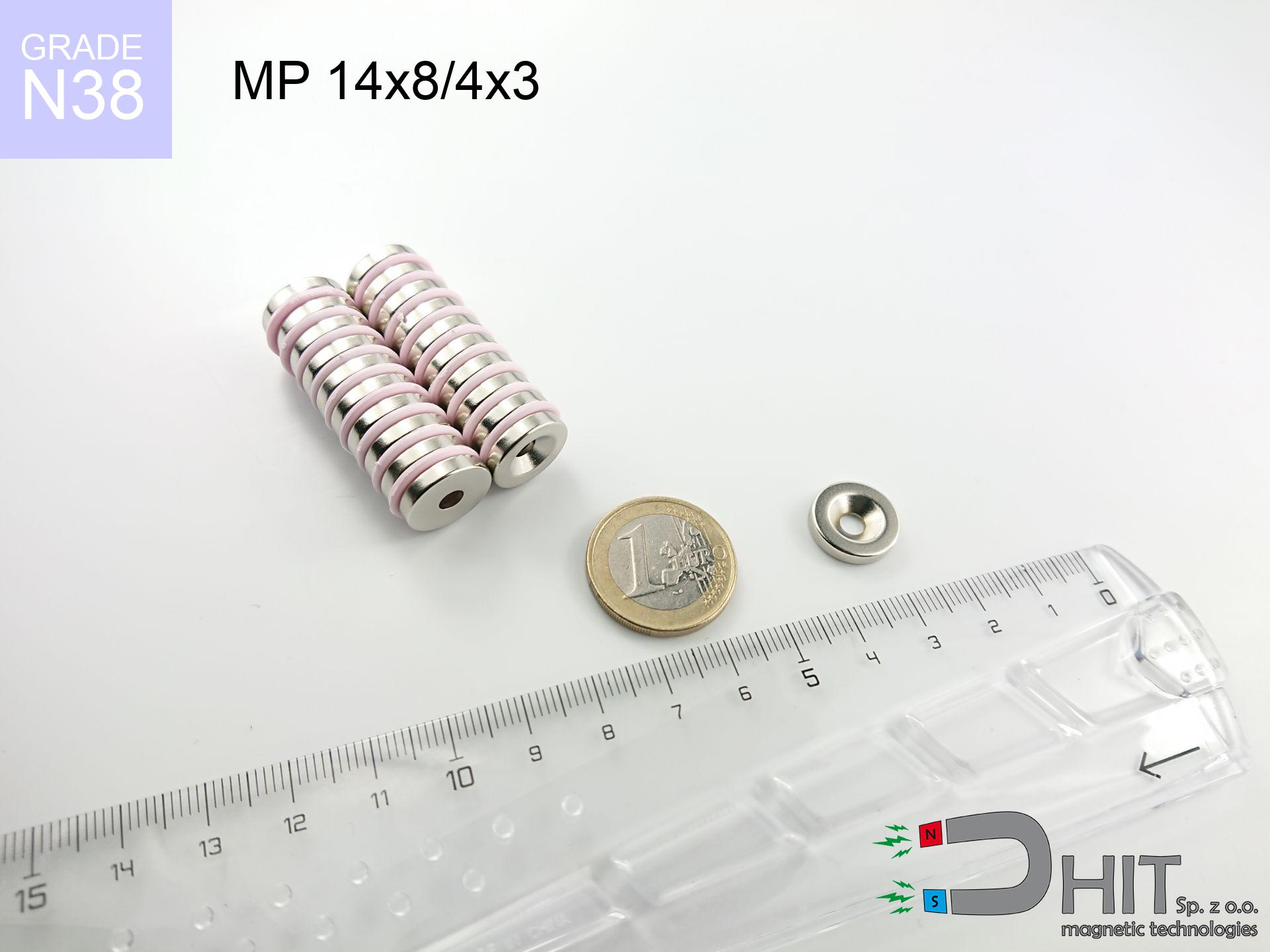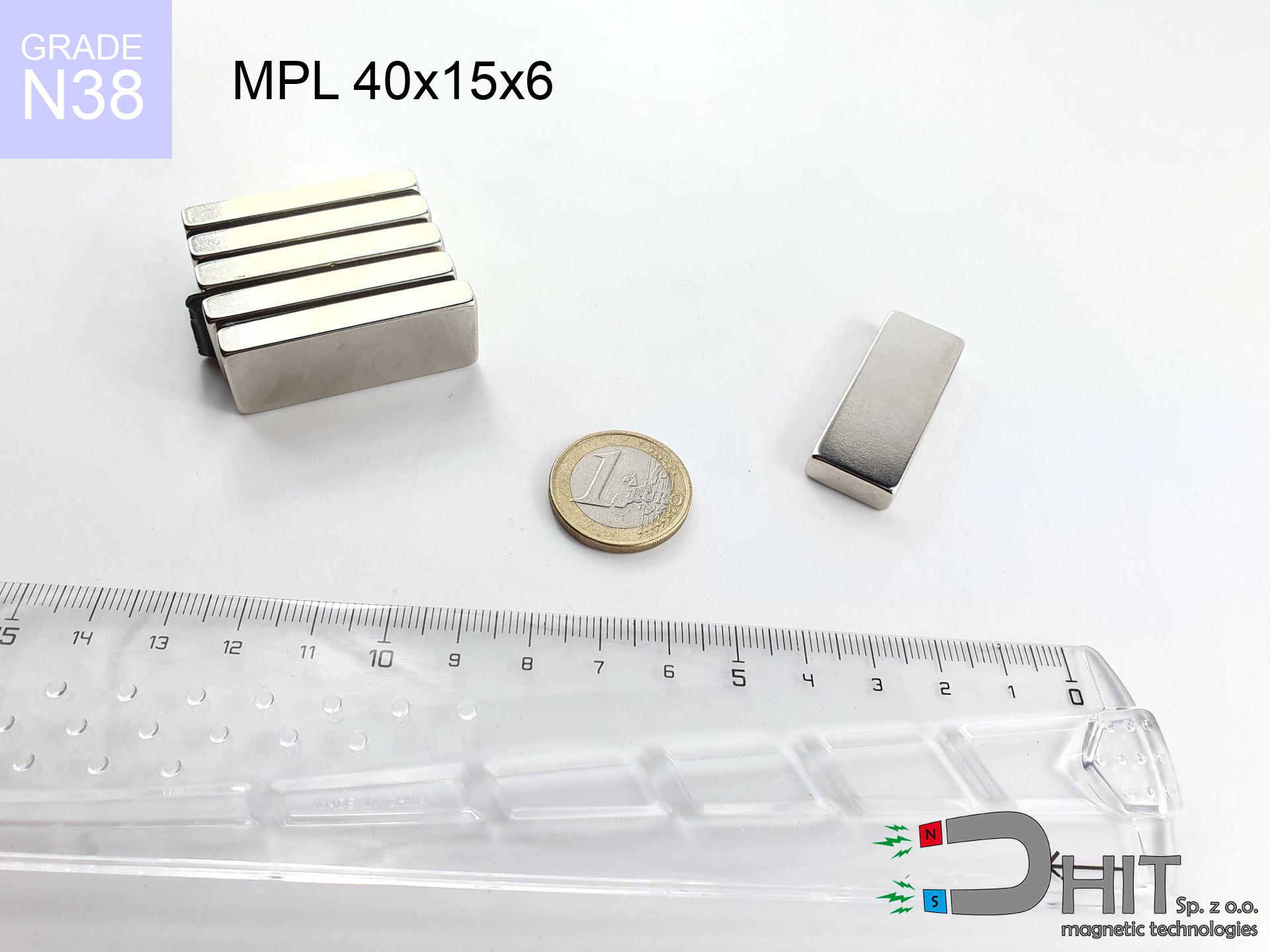MPL 25x15x2 / N38 - lamellar magnet
lamellar magnet
Catalog no 020392
GTIN: 5906301811893
length
25 mm [±0,1 mm]
Width
15 mm [±0,1 mm]
Height
2 mm [±0,1 mm]
Weight
5.63 g
Magnetization Direction
↑ axial
Load capacity
3.06 kg / 30.01 N
Magnetic Induction
120.03 mT
Coating
[NiCuNi] nickel
2.39 ZŁ with VAT / pcs + price for transport
1.940 ZŁ net + 23% VAT / pcs
bulk discounts:
Need more?Need advice?
Pick up the phone and ask
+48 22 499 98 98
alternatively get in touch using
form
the contact form page.
Weight and shape of a neodymium magnet can be calculated using our
modular calculator.
Same-day processing for orders placed before 14:00.
Magnetic properties of material N38
Physical properties of sintered neodymium magnets Nd2Fe14B at 20°C
Shopping tips
Advantages as well as disadvantages of NdFeB magnets.
Besides their durability, neodymium magnets are valued for these benefits:
- Their magnetic field is maintained, and after around 10 years it decreases only by ~1% (according to research),
- Magnets effectively defend themselves against demagnetization caused by foreign field sources,
- By applying a smooth coating of nickel, the element has an aesthetic look,
- Magnets have maximum magnetic induction on the active area,
- Through (adequate) combination of ingredients, they can achieve high thermal resistance, enabling functioning at temperatures approaching 230°C and above...
- Due to the potential of free forming and customization to custom requirements, magnetic components can be produced in a broad palette of geometric configurations, which expands the range of possible applications,
- Key role in innovative solutions – they are utilized in magnetic memories, electric drive systems, medical devices, also multitasking production systems.
- Relatively small size with high pulling force – neodymium magnets offer impressive pulling force in small dimensions, which allows their use in compact constructions
Characteristics of disadvantages of neodymium magnets: tips and applications.
- At very strong impacts they can crack, therefore we recommend placing them in steel cases. A metal housing provides additional protection against damage and increases the magnet's durability.
- Neodymium magnets demagnetize when exposed to high temperatures. After reaching 80°C, many of them experience permanent drop of power (a factor is the shape and dimensions of the magnet). We offer magnets specially adapted to work at temperatures up to 230°C marked [AH], which are very resistant to heat
- Magnets exposed to a humid environment can corrode. Therefore during using outdoors, we suggest using waterproof magnets made of rubber, plastic or other material resistant to moisture
- Due to limitations in producing threads and complicated forms in magnets, we recommend using cover - magnetic mechanism.
- Potential hazard to health – tiny shards of magnets are risky, if swallowed, which becomes key in the aspect of protecting the youngest. Furthermore, tiny parts of these products are able to disrupt the diagnostic process medical in case of swallowing.
- Higher cost of purchase is a significant factor to consider compared to ceramic magnets, especially in budget applications
Optimal lifting capacity of a neodymium magnet – what it depends on?
Breakaway force was defined for ideal contact conditions, assuming:
- on a base made of structural steel, effectively closing the magnetic field
- with a thickness minimum 10 mm
- with a plane perfectly flat
- with direct contact (no impurities)
- for force applied at a right angle (pull-off, not shear)
- in neutral thermal conditions
Key elements affecting lifting force
Real force is affected by specific conditions, such as (from most important):
- Space between surfaces – every millimeter of distance (caused e.g. by varnish or unevenness) diminishes the pulling force, often by half at just 0.5 mm.
- Force direction – declared lifting capacity refers to detachment vertically. When attempting to slide, the magnet exhibits much less (typically approx. 20-30% of maximum force).
- Wall thickness – the thinner the sheet, the weaker the hold. Part of the magnetic field penetrates through instead of generating force.
- Material composition – not every steel reacts the same. High carbon content weaken the interaction with the magnet.
- Surface finish – ideal contact is obtained only on polished steel. Any scratches and bumps reduce the real contact area, weakening the magnet.
- Temperature influence – high temperature weakens magnetic field. Too high temperature can permanently demagnetize the magnet.
* Lifting capacity testing was performed on plates with a smooth surface of optimal thickness, under perpendicular forces, however under shearing force the lifting capacity is smaller. Additionally, even a slight gap {between} the magnet and the plate decreases the holding force.
H&S for magnets
Flammability
Machining of neodymium magnets carries a risk of fire hazard. Magnetic powder reacts violently with oxygen and is difficult to extinguish.
Heat warning
Standard neodymium magnets (N-type) lose power when the temperature surpasses 80°C. Damage is permanent.
Magnetic media
Intense magnetic fields can corrupt files on credit cards, HDDs, and other magnetic media. Stay away of at least 10 cm.
Life threat
Life threat: Neodymium magnets can deactivate heart devices and defibrillators. Do not approach if you have medical devices.
Fragile material
Neodymium magnets are sintered ceramics, meaning they are fragile like glass. Clashing of two magnets leads to them shattering into small pieces.
Allergy Warning
It is widely known that the nickel plating (the usual finish) is a potent allergen. If your skin reacts to metals, avoid direct skin contact or opt for versions in plastic housing.
Serious injuries
Protect your hands. Two powerful magnets will join instantly with a force of several hundred kilograms, crushing anything in their path. Exercise extreme caution!
Conscious usage
Be careful. Neodymium magnets act from a distance and snap with massive power, often faster than you can move away.
Choking Hazard
Only for adults. Tiny parts can be swallowed, causing intestinal necrosis. Store out of reach of kids and pets.
Impact on smartphones
A strong magnetic field interferes with the operation of magnetometers in phones and GPS navigation. Do not bring magnets close to a smartphone to prevent damaging the sensors.
Caution!
Looking for details? Check our post: Why are neodymium magnets dangerous?






![SM 32x100 [2xM8] / N42 - magnetic separator SM 32x100 [2xM8] / N42 - magnetic separator](https://cdn3.dhit.pl/graphics/products/sm-32x100-2xm8-cox.jpg)

